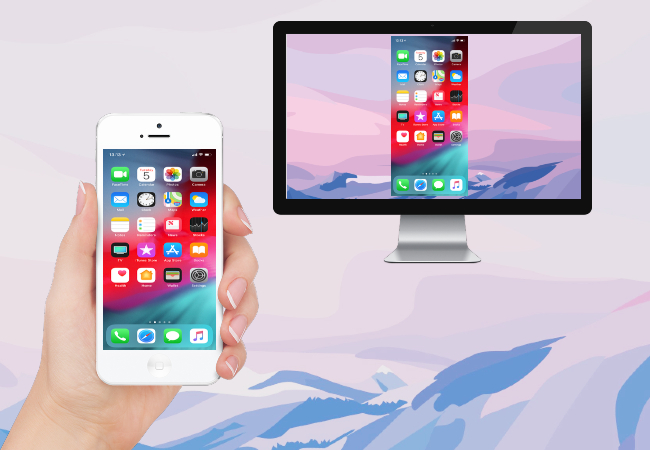Bridging the Gap: A Comprehensive Guide on How to Connect Your iPhone to Your Computer, With or Without a Cable

Introduction:
In the ever-expanding ecosystem of digital connectivity, bridging the gap between your iPhone and computer is a fundamental aspect of managing your digital life seamlessly. Whether you want to transfer files, sync data, or simply charge your device, this comprehensive guide will walk you through the various methods of connecting your iPhone to your computer, whether using a cable or opting for wireless solutions.
Chapter 1: Understanding the Need for iPhone-Computer Connectivity:
Before delving into the technical details, it’s essential to grasp why connecting your iPhone to your computer is crucial. This chapter will explore the myriad reasons, including data backup, file transfer, software updates, and device management, emphasizing the importance of a robust connection for a streamlined user experience.
Chapter 2: Using a Lightning or USB-C Cable for Wired Connection:
The traditional method of connecting your iPhone to a computer involves using a Lightning or USB-C cable. This chapter will guide you through the step-by-step process of connecting your iPhone to a Windows PC or Mac using a cable. From selecting the right cable to ensuring a secure physical connection, you’ll learn the intricacies of this fundamental method.
Chapter 3: Setting Up iTunes (for Windows) or Finder (for Mac):
For users relying on a cable connection, iTunes (on Windows) or Finder (on Mac) serves as the primary interface for managing your iPhone. This chapter will explain how to set up and navigate these applications, covering tasks such as syncing music, updating software, and creating backups.
Chapter 4: Wireless Connection via Wi-Fi Sync:
Embrace the wireless convenience of Wi-Fi syncing to connect your iPhone to your computer without a cable. This chapter will walk you through the setup process, enabling you to sync your device seamlessly over a shared Wi-Fi network. From configuring settings to initiating a sync, you’ll discover the benefits of cable-free connectivity.
Chapter 5: iCloud for Seamless Wireless Integration:
Harness the power of iCloud for a truly wireless experience. This chapter will delve into the integration of iCloud with your iPhone and computer, enabling automatic data synchronization, photo sharing, and seamless access to your content across devices. You’ll learn how to set up iCloud and leverage its features for a more connected digital life.
Chapter 6: AirDrop for Quick File Transfers:
When it comes to sharing files swiftly between your iPhone and computer, AirDrop is a game-changer. This chapter will explore the capabilities of AirDrop, guiding you through the process of transferring photos, documents, and other files effortlessly. Tips for troubleshooting common AirDrop issues will also be covered.
Chapter 7: Utilizing Bluetooth for Connectivity:
Bluetooth offers another wireless avenue for connecting your iPhone to your computer. This chapter will explain how to pair your devices via Bluetooth, facilitating tasks such as file transfers and using your iPhone as a remote control. You’ll gain insights into optimizing Bluetooth settings for a seamless connection.
Chapter 8: USB Accessories and External Devices:
Your iPhone can connect to a variety of USB accessories and external devices, expanding its functionality. This chapter will explore the compatibility of USB accessories, such as keyboards, MIDI controllers, and external storage devices. Guidelines for proper setup and troubleshooting will be provided.
Chapter 9: Third-Party Apps and Solutions:
The App Store is a treasure trove of third-party apps designed to enhance the connectivity between your iPhone and computer. This chapter will showcase notable apps for file sharing, remote access, and productivity, opening up new possibilities for seamless interaction between your devices.
Chapter 10: Troubleshooting Common Connection Issues:
Despite the advancements in technology, users may encounter connection issues. This chapter will address common problems such as unrecognized devices, failed syncs, and connectivity errors. Troubleshooting steps and solutions for both cable and wireless connections will be provided.
Chapter 11: Security Considerations for Device Connectivity:
Ensuring the security of your data during device connectivity is paramount. This chapter will discuss best practices for securing your iPhone and computer connections, including enabling encryption, setting up strong passwords, and being vigilant against potential threats.
Chapter 12: Keeping Your Devices Updated:
Regularly updating your iPhone and computer operating systems is crucial for maintaining a secure and efficient connection. This chapter will stress the importance of installing updates promptly, covering the benefits of new features, security patches, and improved compatibility.
Conclusion:
Connecting your iPhone to your computer is not merely a technical process; it’s a gateway to a seamless and integrated digital experience. This comprehensive guide has equipped you with the knowledge and tools to establish connections, transfer data, and navigate potential challenges, whether using a cable or opting for wireless solutions. By following these guidelines and staying informed about evolving technologies, you can ensure a robust and efficient connection between your iPhone and computer, enriching your digital lifestyle.




